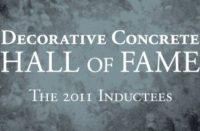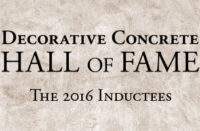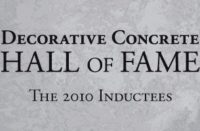The Decorative Concrete Hall of Fame added four more names to its roster when it welcomed its newest members during a ceremony and dinner held Monday, Nov. 6, at the 2017 Concrete Decor Show in Palm Harbor, Florida. Ben Ashby, David De Angelis and Glen Roman received plaques during the gala, while Francis “Sully” Sullivan was inducted posthumously.
Established in 2010 by Professional Trade Publications, parent company of Concrete Decor magazine, the Decorative Concrete Hall of Fame recognizes individuals and companies whose contributions have impacted the future of decorative concrete, both as a business and an art form. Since the Hall of Fame’s inception, 29 individuals and two companies have been bestowed this honor for unselfishly giving their time, energies, loyalty and resources to help the decorative concrete industry grow.
Honorees were chosen by Hall of Fame members. A brief recap of their careers follows:
Ben Ashby
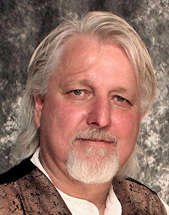 From Roy, Utah, Ben Ashby was the offspring of Don Ashby, an “old school” man of concrete, and Sandra Ashby, a professional artist. He’s been directly involved with the concrete industry since he was 12. “I just knew concrete was something I was going to do from day one,” he says.
From Roy, Utah, Ben Ashby was the offspring of Don Ashby, an “old school” man of concrete, and Sandra Ashby, a professional artist. He’s been directly involved with the concrete industry since he was 12. “I just knew concrete was something I was going to do from day one,” he says.
Beginning in the ninth grade, Ashby participated in a work study program, spending half days on the job site learning directly from his father. After high school, he attended Weber State University on a music scholarship, where he learned to balance his music with his affinity toward concrete.
During college, Ashby traveled around the world as a bass player for the school-sponsored band. He left the school band to go professional, and performed at American military bases worldwide as part of the USO’s entertainment agenda. On any given weekend, you can still catch him playing with his current band, Dirty Harry, somewhere in Utah.
When he was 22, Ashby decided he needed a change of pace and moved to Phoenix, Arizona. There, he worked with Sher-Good Concrete Inc. for 20 years as a foreman and superintendent, building multimillion-dollar custom homes. In his spare time, he experimented to create new looks in concrete, which ultimately led to the creation of The Ashby System, a technique that uses mostly standard ingredients to create the look of aged stone.
In 2003, he moved back to Utah and spent countless nights for four more years developing the method to create beautifully artistic countertops in a century-old chicken coop. Upon unveiling the newly created product to the public, Ashby was inundated with orders and bombarded with requests to teach the method that creates this look.
He aligned himself with Gerry Sadlier, then vice president of Concrete Solutions and a well-seasoned trainer, and began teaching The Ashby System to his interested peers. The two men formed Countertop Solutions which ultimately became StoneCrete Systems. Today they work together to bring fine products, training and support to many hundreds of trainees a year.
A very hands-on and personable instructor, Ashby gives direct support to all his trainees, displaying a seldom seen loyalty to those who have completed one of his concrete countertop courses. Today he works in his Utah shop creating an impressive array of concrete items unique to the industry including countertops, fireplaces, showers, flooring and architectural details in many homes.
David De Angelis
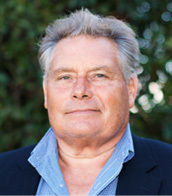 Born in 1955, Dave De Angelis has considered concrete a part of his life since early childhood. A member of a third-generation family-run business in Pittsburgh, Pennsylvania, he was no stranger to hard work. For decades, the company performed all types of concrete construction but its main thrust was flatwork. In the mid 1970s, it began investigating the new kid on the block: “imprinted” concrete.
Born in 1955, Dave De Angelis has considered concrete a part of his life since early childhood. A member of a third-generation family-run business in Pittsburgh, Pennsylvania, he was no stranger to hard work. For decades, the company performed all types of concrete construction but its main thrust was flatwork. In the mid 1970s, it began investigating the new kid on the block: “imprinted” concrete.
From 1973-78, De Angelis attended John Carroll University where he earned a bachelor’s degree in marketing. During college, he spent summers doing concrete work, and in summer 1976 he was introduced to the decorative concrete world through the Bomanite program in California. “This was a life-changing experience,” he says.
Back then, “imprinted” concrete was still in its infancy and information, training and technique were limited. In three to four years, De Angelis learned invaluable lessons which helped pioneer a strong foundation. For seven more years, he worked in the family business transitioning a portion of the operations into decorative concrete flatwork. He also traveled for Bomanite to perform training/consulting sessions.
The market for “imprinted” concrete was growing substantially and, in 1983, De Angelis moved to Tulsa, Oklahoma, and developed the state’s first Bomanite franchise. The business grew for the next five years despite a slumping economy.
In 1986, Bomanite Corp. offered him a job as director of technical services and, in mid-1987, he sold his company in Tulsa and moved to its headquarters in Palo Alto, California. Bomanite’s manufacturing expanded exponentially during De Angelis’s tenure and the corporation moved operations to the Fresno area.
For 10 years, De Angelis was instrumental in the development of products, tooling and techniques for architectural concrete. His fondest memories are the times spent with colleagues, sharing ideas and interacting with the workforce. “It was those times that spawned true innovation,” he says. In 1997, when he was vice president, he left Bomanite and returned to Tulsa to start an independent company, Architectural Paving Systems.
By this time, the decorative concrete industry had evolved into much more than stamped concrete. It now included such things as custom finishes, staining, sandblast finishes, polished concrete and other specialty applications.
De Angelis’s experience spans 41 years in the decorative concrete industry — working in the field, and creating and marketing new tooling, products and techniques, as well as formulating and manufacturing products. “I owe many of my successes to the special people I’ve been surrounded by throughout the years,” he says. “It’s been a lifetime of blessings and successes because of these people.”
Currently, De Angelis continues to operate his business in Tulsa, still making concrete his canvas.
Glen Roman
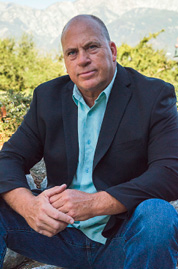 Glen Roman has worked in the decorative concrete industry for almost two decades sharing his skills in a variety of applications and techniques. He began his career in 1998 with Brickform, a leader in the decorative concrete industry, which hired him to head the division for a new sandblast stenciling product.
Glen Roman has worked in the decorative concrete industry for almost two decades sharing his skills in a variety of applications and techniques. He began his career in 1998 with Brickform, a leader in the decorative concrete industry, which hired him to head the division for a new sandblast stenciling product.
“Before I knew it, I was doing a lot of traveling and working on high-profile projects with some very knowledgeable and talented people in the industry. You could say I learned my skill set from some of the best!” he says.
A short time later, Roman began delivering presentations and conducting Brickform’s contractor training seminars across the country.His special skills and teaching methods earned him such honors as the Concrete Network’s 2005 Industry Leader award.
“I’ve always liked helping contractors understand how all these products work together along with some of the realistic limitations they can encounter,” he says.
His unique job description has allowed him to travel throughout the U.S. and Canada and internationally in South America, the United Kingdom, China and Vietnam, working with customers and architects for project support and on-site crew training on a variety of decorative concrete methods. “I’ve had some truly great life experiences I would have surly missed out on if it hadn’t been for my position in the decorative concrete industry,” he says.
Roman is best known for his in-depth knowledge of large-scale sandblast stenciling techniques and his history of working on projects that feature this application. He has co-written and appeared in numerous articles on the topic along with a wide range of other applications for industry publications such as Concrete Decor and Concrete Construction magazines, as well as online for the Concrete Network. He was also a featured artisan in Concrete Decor.
In past years, Roman has been a keynote speaker in the World of Concrete seminar program in Las Vegas alongside other instructors and artisans in the industry including Bob Harris, Tom Ralston, Gerald Taylor and Steven Ochs. Most recently, he’s been a speaker and support volunteer at the Concrete Decor Shows held across the country.
Roman is currently the owner and operator of Staintec, a company he founded in 2007 that specializes in exterior decorative concrete restoration and troubleshooting, along with manufacturer consulting and on-site project support.
His main goal is to help educate everyone from architects to homeowners to understand the different aspects of correctly installing and maintaining decorative concrete products. Roman’s unique teaching methods and customer relationships have earned him a special place in the industry.
Francis “Sully” Sullivan
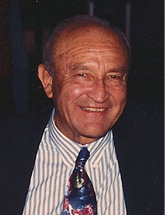 Francis “Sully” Sullivan, founder of Sullivan Concrete Textures in California, proved to be a true industry pioneer and innovator, having contributed invaluably to the decorative and architectural concrete industry throughout his lifetime.
Francis “Sully” Sullivan, founder of Sullivan Concrete Textures in California, proved to be a true industry pioneer and innovator, having contributed invaluably to the decorative and architectural concrete industry throughout his lifetime.
Under his list of credits is the ever-popular ashlar slate concrete stamp, which he helped develop along with Disney Imagineering for Disneyland decades ago. In his 80s, he patented Aggretex, a 3/8-inch cementitious coating where anything from abalone shells to colored glass can be added without hand broadcasting the aggregate. And there were lots of things he accomplished in between.
Sullivan’s decorative concrete career began in 1964 when he met up with Brad Bowman, one of the founding fathers of Bomanite and the man credited with the invention of “ornamental concrete.” Sullivan was the first to install it in Southern California.
By 1970, he became the fledging Bomanite Corp.’s first franchise partner in Southern Cal and was licensed to install the new decorative element. Sullivan also trained the franchisees that would subsequently sign on.
In the early years, there were only three designs: cobblestone, brick and 12-by-12 tile. Sullivan continually helped this line grow and evolve because he was always striving to improve the industry. From the onset, he incorporated dust-on color hardeners, a process he continued to use throughout his career, and even had a color named after him, Sully Gray-Green.
In the ensuing decades, Sullivan’s projects included Disneyland, Sea World, the visitor’s center on top of the Hoover Dam, the convention centers in Pomona and Long Beach, and the light rail project in east Lost Angeles, to name but a few. He also installed Pershing Square in downtown Los Angeles and a major portion of Disney’s California Adventure Park in Anaheim.
Sullivan also came a long way from that first stamped project that looked like brick as the Golden Age of Concrete dawned with designs that revolutionized the industry. His fancy driveways for famous people included Sylvester Stallone, Rod Stewart, Kenny Rogers, and Tony Curtis and Janet Leigh. The list goes on.
“I always had the vision,” Sullivan said in a 2007 article in LandscapeOnline.com, “and I still have it.”
Even though Sullivan never kept an official tally, it’s safe to say he likely placed more than 1 million square feet of concrete per year during the many years he was in business.
Concrete was indeed Sullivan’s lifelong passion and he remained active well into his senior years. He passed away Jan. 1, 2013, in Newport Beach, California, at the age of 92.
